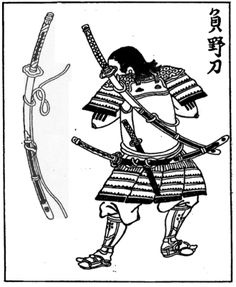
Have you ever heard of a Katana? The Katana was created in the Kamakura period (1185-1333.) The blade of the Katana was curved and slender. The Katana was a two handed sword and was used mostly in close combat warfare. The Katanas was made with circular guards so as to block their hand from enemy swords. The sheath was made of lacquered wood. The Katana’s blade was surprisingly short; it reached 23 to 28 inches. Lower-ranked Samurai used the Katana.
Katanas are made of special Japanese steel. They are forged and layered with steels and different carbon. Aged Katanas are stronger than newly made swords. The sword smith welds and folds the steel many times; at this stage it may have no curve at all. Next, the Smith layers wet clay slurry on the sword. The edge of the blade is coated with a thinner coat than the sides and spine. Then they heat it up and soak it in water. The slurry causes the blade to curve and harden. When the steel and carbon are at room temperature, they’re heated beyond 750 degrees Celsius. It enters a phase called the austenite phase. The phase it cooled with cold water. After the blade is forged, it is polished. The polish takes three weeks to set in.
If the Katana is mishandled, it can be damaged. It should be stored horizontally in its sheath, curve facing down and edge facing up so as not to blunt the blade. It is essential that the blade remains well oiled, powdered and polished, as natural moisture from your hands will cause mold and rust if it is not cleaned. The oil used is choji oil. If it is stored for longer periods, it is important that the sword is taken out and aired to prevent rust or mold.
In 1876 the Haitorei Edict forbade swords to be carried publicly, except for some people—such as Samurai lords, police and the military– could carry them in public. After World War 2, Japanese sword smiths wore allowed to work on swords, but they had severe restrictions. They had to be a licensed sword smith, serve a 5-year apprenticeship and each sword smith could produce only two long swords per month. All the swords had to be registered to the government of Japan.
In the late 14th century Katana swords were between 27.5” and 28.5”. During the early 16th century it diminished to 23.5”. During the late 16th century the length shot back up to 28.5”. Two swords were worn on the Samurai at the same time; these to swords were called the Wakisashi and the Katana. The Katana was larger and more flexible than the Wakasashi. When wore on the Samurai these two swords were called the Diasho.
Toyotomi Hideyoshi is one of the founding fathers of Japan, he is one of the three men whose actions helped Japan unify and end the long and bloody era of Sengoka. Hideyoshi succeeded his former liege lord Oda Nobunaga and began to integrate social and cultural changes that would shape Japan over the period of the next 250 years. He banned the ownership of the Katana and other swords from all individuals who were not a part of the Samurai; he began to hunt the world for Samurai weapons. When he found the weapons he would use them for Samurai classes. Although it consolidated military power, it was the biggest step towards peace during the entire period of the Segoku.
